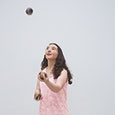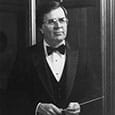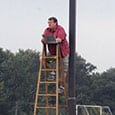I heard someone yell, “Julia’s juggling!” Suddenly I had a crowd gathered around me in the music building of The College of New Jersey. Soon I was trading tricks with other music majors who knew how to juggle and teaching those who wanted to learn. Laughter echoed in the music building as everyone stopped focusing on assignments and took a few minutes to juggle.
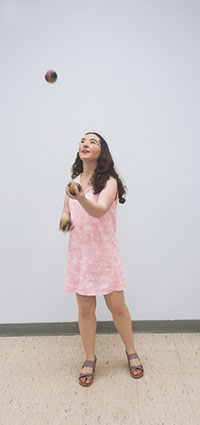
Juggling and the Brain
Learning how to juggle improves a musician’s skills in unimaginable ways. The earlier students learn how to juggle the better, but it is never too late to start. Most of the time in everyday activities, one side of the brain dominates. Juggling is hard to master in the beginning because it forces both sides of the brain to work together. Musicians use both sides of the brain when playing music, so learning how to juggle enhances the brain connections needed to play the flute well.
There was a study performed by the neurology department of the University of Regensburg in Germany that examined whether juggling affects the brain. The study was published in Nature, the International Journal of Science in February 2004 Volume 427 Issue 112-113. In the study, twenty-four people learned how to juggle proficiently and practiced for several months at it, while another group did not. The people who learned to juggle increased the gray matter in their brains although over time, this change decreased when they stopped juggling. More research is needed to see exactly how juggling affects the brain, but this is scientific evidence that juggling improves connections in the brain.
Juggling is Fun for Students
Juggling is exciting to learn and provides visual results of progress in a short amount of time. As students learn a pattern, they can see their success and become more motivated to achieve the next level. I learned how to juggle mostly because it looked cool and challenging, and a friend was doing it too. I did not realize how much it would help my flute playing.
Juggling and Music
In relation to music, juggling helps with counting and understanding rhythms. Unlike when students play, throwing the balls provides a visual representation of a rhythmic pattern. It also provides practice with coordinating the movements of both hands.
Getting Started
In high school I spent several summers teaching juggling to children at camp. Later, I introduced college friends to the skill. The following are some of the most efficient ways to teach all age groups how to juggle.
One of the biggest challenges for beginners is the fear of dropping a ball. When practicing, it is best to sit on the ground and to not even attempt to catch the objects at first. This allows the body to become familiar with the feel of the correct pattern. Once students can repeat the pattern with ease, they can try to start catching the objects. The maximum height that beginners should throw the objects is as high as they can comfortably reach. To figure this out, ask them to hold a hand up like they are raising a hand to be called on in class. They should not exceed that height.
Throwing Two Objects
Another problem that beginners have is a misconception of the actual motion of the balls in the air. Most inexperienced jugglers attempt to throw two objects in a circular pattern. It is nearly impossible for beginners to maintain that pattern with three or more objects. That pattern is actually an advanced trick called a shower. Instead, they should begin with an X pattern. The best way to achieve this is to imagine that you are in a box and are throwing to the two upper corners. The balls cross and fall to the opposite hand, creating the desired pattern. The objects cannot be thrown at the same time because they will collide and then it will be hard to catch them. Throw with the first hand and then after a slight hesitation throw the second ball to ensure that the objects do not collide. It may take a few purposeful drops to figure out this pattern.
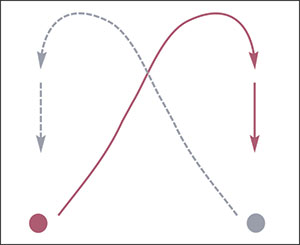
If one is right-handed then the right hand throws first and is followed by the left hand. If you are left-handed then the left hand throws first followed by the right hand. Once you can toss and catch like this successfully ten times in a row then you can move onto throwing three.
Moving to Three Objects
A three-object pattern uses the same X pattern. The objects should be small enough that two can be held comfortably in one hand at once. To throw three balls, hold two in the dominant hand and one in the nondominant hand. The hands alternate starting with the hand with two objects. The cue to throw the second object is when the first object reaches its maximum height. In other words, after starting, you should have only one object in each hand. It may take a few purposeful drops to get used to throwing three. Once you feel comfortable with the pattern, start trying to catch them. Count how many you can throw and see if you can beat that number. If you are having trouble, a friend may be able to see where you are getting off the pattern. (A useful tutorial video illustrating three objects can be found at https://www.youtube.com/watch?
Just as in flute practice, partner practice is beneficial. Stand next to each other, shoulder to shoulder, with one person being the left hand and the other the right hand. Using two people to complete the pattern will improve hand-eye coordination and is a great way to improve the nondominant hand’s accuracy at catching. Periodically switch sides. This is similar to having one flutist blow on the headjoint and the other do the fingerings.
Musicians tend to understand juggling faster than non-musicians. This may be because they use both sides of the brain more than the average person, and juggling reinforces these connections that are already there. A musician’s sense of rhythm is probably also helpful.
It is frustrating in the beginning. I encourage students to have positive-sounding music in the background or humming or singing while they figure out how to juggle. Nursery rhymes like Twinkle, Twinkle Little Star or Mary Had a Little Lamb seem especially effective.
Juggling can be a great way to give students a break from playing the flute while still improving their skills. Especially for music summer camp programs, juggling can be a welcome physical break and a new exciting challenge. The equipment needed is not expensive. Professional equipment is not necessary. Just look for circular objects that are easy to hold and do not bounce. (With bouncing balls, students will spend more time chasing them than juggling.)

Besides increasing the connections in the brain, juggling can be used as a bonding tool. If a studio or ensemble learns how to juggle together, the group will become closer. Encourage partner juggling and pair up stronger jugglers with beginners. Give them some starting instructions and then just watch what happens. Students will help one another and develop stronger connections with each other.
The most fascinating part about juggling is that just like with music there are endless possibilities. There are many types of equipment to master besides beanbags, and one can increase the numbers of objects for greater difficulty. Juggling also helps with focus and concentration. It is such a complex task for the brain that other thoughts such as bad test grades, stress, and wrong notes are forgotten. It clears the thoughts and leaves students more focused.
